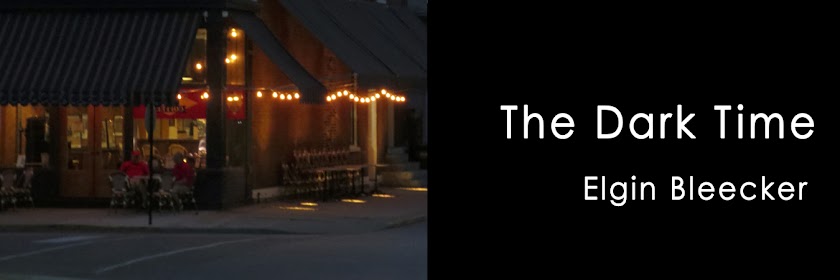“Soldier in the
Rain” is a memorable little black-and-white film from 1963 featuring the
unlikely teaming of two super-stars of the day.
Steve McQueen, just coming off the success of “The Great Escape,” plays another military man, but a very different character. In this film, he is the goofy, good-hearted supply sergeant, Eustis Clay, who can seem dim and savvy at the same time.
Jackie Gleason, at the peak of his television fame, and an impressive screen presence in “The Hustler” and “Requiem for a Heavyweight,” plays Master Sgt. Maxwell Slaughter, a wheeler-dealer on a southern base in the peacetime army.
Eustis considers Maxwell his mentor. Maxwell sees Eustis as a resource for finagling the things he needs to make his life comfortable.
The movie is full of comic sequences, some taken directly from William Goldman’s novel of the same name, and some invented by writer-producer Blake Edwards.
Beneath the high jinks, the film’s heart is in the friendship between these two men. Maxwell will help Eustis out of any bone-headed scrape the younger soldier can get himself into. Eustis, understanding the sad loneliness of his 40ish friend, sets Maxwell up on a date with a local girl. Unfortunately, the date is with Bobby Jo Pepperdine, a teenager, played by Tuesday Weld, who has nothing in common with Maxwell and is only going out on a double date as a favor to Eustis. But Maxwell and Bobby Jo develop an easy, platonic rapport.
The three stars were perfectly cast. Not only do they inhabit their parts well and play off one another beautifully, but also they seem to have been in Goldman’s mind when he wrote the book (not that movies have to match an author’s description of a character).
Director Ralph Nelson expertly guides McQueen and Gleason through a picture that moves back and forth between comedy and drama, slapstick and bar fights, clowning and tragedy. Nelson, a TV veteran, directed his first film, “Requiem for a Heavyweight,” in 1962, with Gleason in an important supporting role to Anthony Quinn. The following year he not only directed “Solider in the Rain,” but also “Lilies of the Field,” for which Sidney Poitier won an Oscar.
"Soldier in the Rain" is well worth a look as a comedy, as a drama, or just as an excuse to see McQueen tooling around in a big old convertible, or to watch Gleason calmly smoking at his desk while conning the brass.
(A companion piece to this post about Goldman’s book is on this site and at Friday’s Forgotten Books, Patti Abbott’s weekly roundup of good reads.)
Steve McQueen, just coming off the success of “The Great Escape,” plays another military man, but a very different character. In this film, he is the goofy, good-hearted supply sergeant, Eustis Clay, who can seem dim and savvy at the same time.
Jackie Gleason, at the peak of his television fame, and an impressive screen presence in “The Hustler” and “Requiem for a Heavyweight,” plays Master Sgt. Maxwell Slaughter, a wheeler-dealer on a southern base in the peacetime army.
Eustis considers Maxwell his mentor. Maxwell sees Eustis as a resource for finagling the things he needs to make his life comfortable.
The movie is full of comic sequences, some taken directly from William Goldman’s novel of the same name, and some invented by writer-producer Blake Edwards.
Beneath the high jinks, the film’s heart is in the friendship between these two men. Maxwell will help Eustis out of any bone-headed scrape the younger soldier can get himself into. Eustis, understanding the sad loneliness of his 40ish friend, sets Maxwell up on a date with a local girl. Unfortunately, the date is with Bobby Jo Pepperdine, a teenager, played by Tuesday Weld, who has nothing in common with Maxwell and is only going out on a double date as a favor to Eustis. But Maxwell and Bobby Jo develop an easy, platonic rapport.
The three stars were perfectly cast. Not only do they inhabit their parts well and play off one another beautifully, but also they seem to have been in Goldman’s mind when he wrote the book (not that movies have to match an author’s description of a character).
Director Ralph Nelson expertly guides McQueen and Gleason through a picture that moves back and forth between comedy and drama, slapstick and bar fights, clowning and tragedy. Nelson, a TV veteran, directed his first film, “Requiem for a Heavyweight,” in 1962, with Gleason in an important supporting role to Anthony Quinn. The following year he not only directed “Solider in the Rain,” but also “Lilies of the Field,” for which Sidney Poitier won an Oscar.
"Soldier in the Rain" is well worth a look as a comedy, as a drama, or just as an excuse to see McQueen tooling around in a big old convertible, or to watch Gleason calmly smoking at his desk while conning the brass.
(A companion piece to this post about Goldman’s book is on this site and at Friday’s Forgotten Books, Patti Abbott’s weekly roundup of good reads.)


